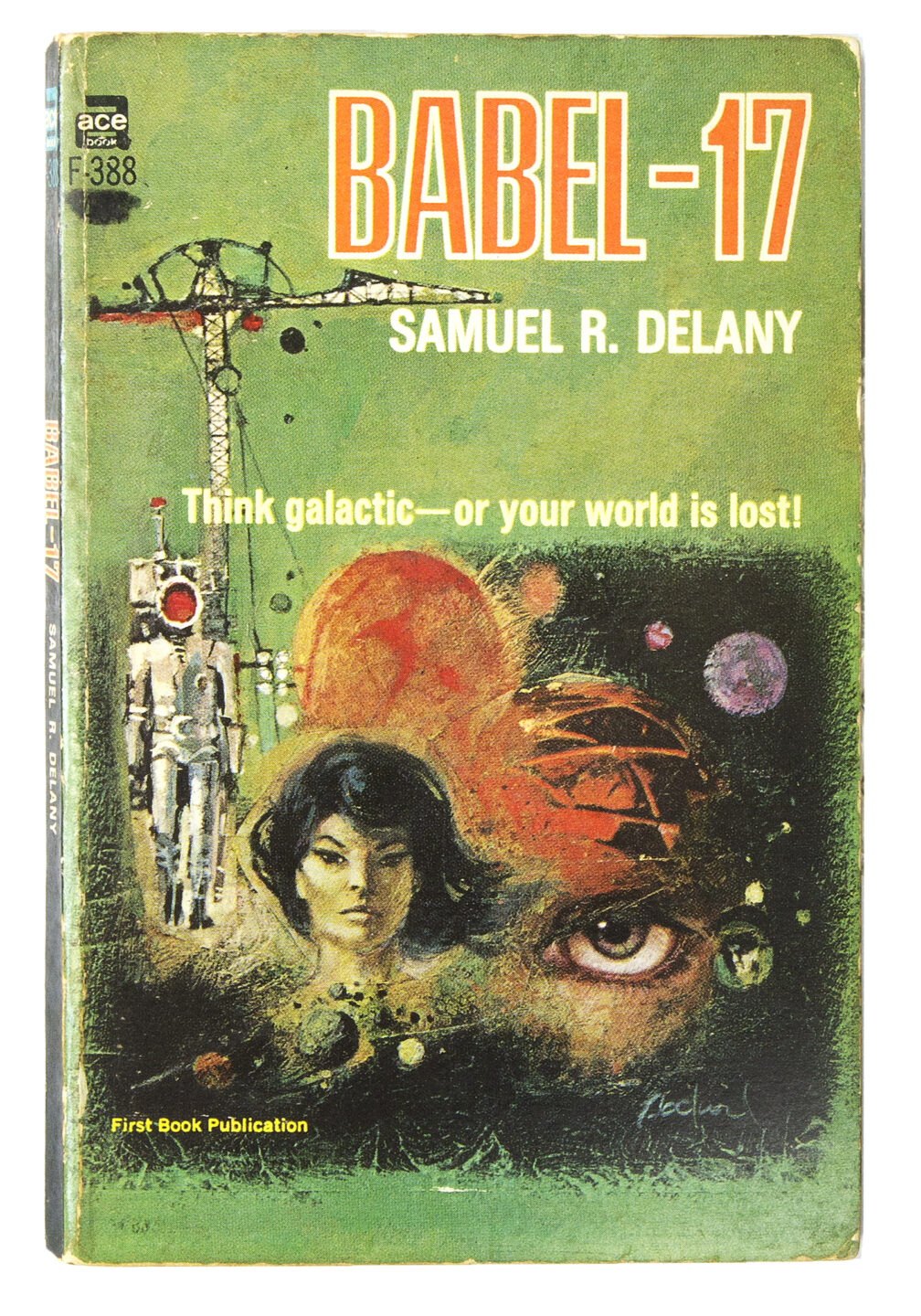The DECODER series — to which SEMIOVOX has invited our semiotician colleagues from around the world to contribute — explores fictional semiotician-esque action as depicted in books, movies, TV shows, etc.
Samuel R. Delany’s labyrinthine, polymorphic, trippy space opera Babel-17 is most known for its clever exploration of the Sapir-Whorf hypothesis (SWH). SWH proposes that the structure of language influences thought and perceptions, shaping cognitive processes. Different languages — even Delany’s imagined alien language from across the galaxy — can drive differences in thinking about and experiencing reality.
It’s genius — and exciting to see science fiction and sociolinguistic theory cross streams this way, and in such a virtuoso form. But, celebrating this conceit alone misses the point of the book, and what I know to be true about the practice of decoding. According to Babel-17, decoding requires not just intelligence, but intuition and empathy.
In Babel-17, Rydra Wong, celebrity poet, linguist, cryptographer, starship captain, and emerging telepath, is tasked with cracking Babel-17 — an impenetrable code used to cue Invader interstellar terrorist attacks. No one can break Babel-17, and its presence heralds a series of unknown unknowns threatening to destabilize Rydra’s government, the Alliance.
But Rydra deduces that Babel-17 is a language, not a code. Fascinated, she assembles a motley crew and blasts into space to investigate in situ. In time, Rydra learns that once this extraordinarily precise and complex language is fully grasped, it can slow the perception of time, accelerate cognition, and enhance strategic thinking. And the deeper Rydra gets into Babel-17, the more Babel-17 changes Rydra. Ultimately, it makes her an unknowing saboteur on her own ship, the language turns her into the enemy without her knowledge.
There are dire consequences. But, despite all her other gifts, Rydra’s true superpower is openness to her own feelings whenever she encounters another piece of the puzzle. She successfully decodes circumstances at each turn of the novel by sensing and intuiting as well as thinking.
Rydra’s feelings are what guide her to true pattern recognition and understanding, even when they send her into the arms of the Butcher, a rock-hard contract killer whose speech, like Babel-17, lacks any reference to the words “you” and “I.”
She realizes that though the Butcher has also been “turned” by Babel-17, and has been the unwitting source of Invader terrorism, the language itself is not inherently evil, and neither is he. In a romantic interlude between interstellar conflicts, Rydra negotiates the meaning of “you” and “I” with the Butcher, teaching him that when “you” and “I” are essentially the same, violence and terrorism have a personal price. (After all, human understanding isn’t bound by SWH, people can be taught new language to express shared emotional experience, for example.)
Rydra and the Butcher conclude that together “you” and “I” can use this mind-bending weapon for the good of The Alliance. The emotional understanding Rydra’s opened with this stranger, and the intuition she’s applied to the events in the novel set her ahead in comprehending and mastering the full puzzle of Babel-17.
Likewise, studying culture has taught me that curiosity, process, and breadth are only part of the equation when it comes to true understanding. There comes a moment, most often when integrating the work, when you must feel the research with instinct, intuition, and empathy. There’s a personal and emotional component to connecting with cultural research that yields the most penetrating insights and jolts of perception.
As in Babel-17, feeling amplifies the ability to decode.
DECODER: Adelina Vaca (Mexico) on ARRIVAL | William Liu (China) on A.I. ARTIFICIAL INTELLIGENCE | Tim Spencer (England) on VURT | Ramona Lyons (USA) on BABEL-17 | Rachel Lawes (England) on NICE WORK | Alfredo Troncoso (Mexico) on THE ODYSSEY | Gabriela Pedranti (Spain) on MUSIC BOX | Charles Leech (Canada) on PATTERN RECOGNITION | Lucia Laurent-Neva (England) on LESSONS IN CHEMISTRY | Whitney Dunlap-Fowler (USA) on THE GIVER | Colette Sensier (England / Portugal) on PRIESTDADDY | Jamin Pelkey (Canada) on THE WONDER | Maciej Biedziński (Poland) on KOSMOS | Josh Glenn (USA) on LE GARAGE HERMÉTIQUE | Antje Weißenborn (Germany) on BABYLON BERLIN | Ximena Tobi (Argentina) on SIX FEET UNDER | Mariane Cara (Brazil) on ROPE | Maria Papanthymou (Greece) on MY FAMILY AND OTHER ANIMALS | Chirag Mediratta (India) on BLEACH | Dimitar Trendafilov (Bulgaria) on THE MATRIX | Martha Arango (Sweden) on ONE HUNDRED YEARS OF SOLITUDE | Becks Collins (England) on THE HITCHHIKER’S GUIDE TO THE GALAXY | Ivan Islas (Mexico) on THE NAME OF THE ROSE | Paulina Goch-Kenawy (Poland) on THE SENSE OF AN ENDING | Eugene Gorny (Thailand) on SHUTTER ISLAND & FRACTURED.
Also see these global semio series: MAKING SENSE (Q&As) | SEMIOFEST SESSIONS (monthly mini-conferences) | COVID CODES | SEMIO OBJECTS | COLOR CODEX | DECODER (fictional semioticians) | CASE FILE | PHOTO OP | MEDIA DIET.


